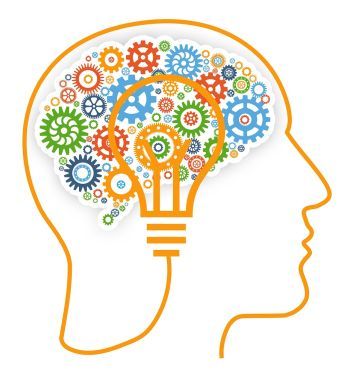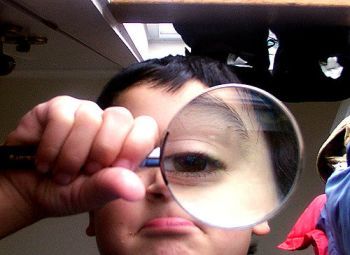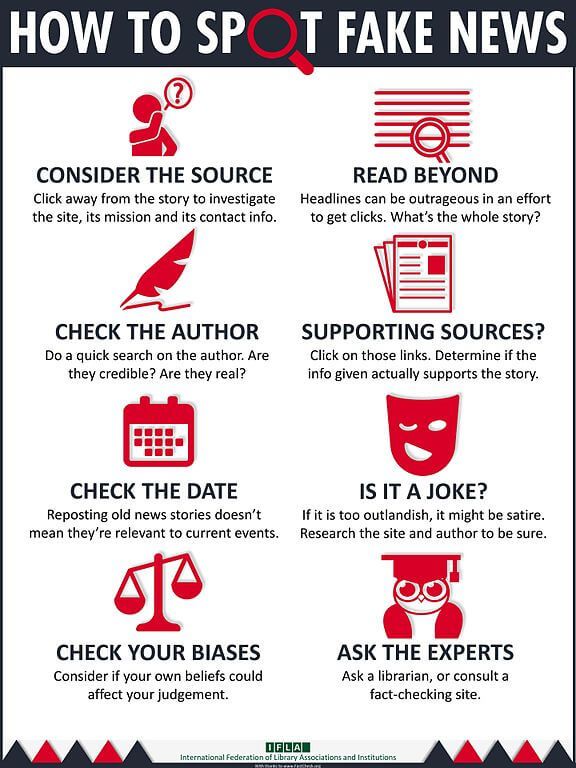This article is part of a series on news literacy designed to educate readers to better judge the reliability of news reports and other sources of information.
We’re a generation drowning in news. Everybody reports, rehashes, comments, shares, recommends, likes, aggregates and spins it. Articles written by artificial intelligence, content farms, satirical sites, fake news sites, PR campaigns, or for native advertising compete for our attention and blur the distinctions between news and, well, everything else.
Yet paradoxically, we’re starving for news because our consumption habits aren’t healthy. We don’t know how to untangle the snarl of news, entertainment ads and propaganda on our social media feeds, mobile devices, inboxes, television and radio. We fear fake news is undermining democracy, and we’re afraid to trust the mainstream news industry because of a visceral feeling that it’s part of the problem.
But what bothers us most of all?
Deep down, we know that a healthy democratic society needs professional journalists to inform us about what’s going on in our communities and around the world, to hold those in power accountable, and to set the tone of public discourse. Yet, we could be smacked in the face with quality journalism and never recognize it. We lack the necessary news literacy skills.
Join the fight for Israel’s fair coverage in the news
Change begins with ourselves.
Just as good eating requires a healthy diet of fruits, vegetables, grains, proteins and dairy, good news-consumption also requires certain practices. Recognizing this, schools and universities have begun teaching news literacy. New York’s Stony Brook University, which pioneered news literacy curriculum, defines news literacy as “developing critical thinking skills in order to judge the reliability and credibility of information, whether it comes via print, television or the Internet.”
Follow these seven habits to boost your news literacy and you’ll find yourself better informed and a better contributor to the public discourse.
 1. Set aside your own personal biases
1. Set aside your own personal biases
WHY: Left unchecked, personal biases will lead you to interpret, favor and remember information in a way that confirms your preexisting beliefs (confirmation bias) and fail to recall where, when or how you learned something — even though you recall the actual facts (source amnesia). These make you vulnerable to the bad guys trying to manipulate public opinion.
Ultimately, your biases will lead you to wishful thinking, where “the desire for something to be true is so strong, it is used in place of/or as evidence of the truthfulness of the claim.” If you don’t think this can happen to you, see Professor Eyal Winter‘s jarring account of where wishful thinking took his grandfather, a German Jew, during World War II.
Not understanding the fundamentals of mass media today is, unfortunately, also part of the problem. A study published in Science Advances found that people over 65 and those identified as “very-conservative” shared seven times more fake information on Facebook than anyone else. Picking up on the study, the Associated Press reported:
The simplest theory for why older people share more false information is a lack of “digital literacy,” said study co-author Joshua Tucker, also co-director of the NYU social media political lab. Senior citizens may not tell truth from lies on social networks as easily as others, the researchers said.
Harvard public policy and communication professor Matthew Baum, who was not part of the study but praised it, said he thinks sharing false information is “less about beliefs in the facts of a story than about signaling one’s partisan identity.”
HOW:
- Be open to information that challenges your assumptions.
- Tune out your emotions. Focus on the news as a critical thinking exercise.
- Don’t let overconfidence in your knowledge lead you to stop gathering new information.
- Proactively choose your news services and go to their sites. Don’t rely on algorithmic feeds such as Google News or Facebook.
- News is a continuum. Don’t expect reports to necessarily provide everything you want to know or a sense of closure.
- If you can’t set aside your personal biases, at least be aware of them.
See more of HonestReporting’s News Literacy section, including Why Headlines Matter
 WHY: Trying to know everything about everything is distracting, draining, and futile. Don’t bite off more than you can chew. Knowing how to allocate the right proportion of time to a story is a good news literacy skill to develop.
WHY: Trying to know everything about everything is distracting, draining, and futile. Don’t bite off more than you can chew. Knowing how to allocate the right proportion of time to a story is a good news literacy skill to develop.
HOW:
- See how a variety of news services cover one specific issue that’s especially important or meaningful to you.
- Make a point to spend less time (or even no time) on certain other stories. You’ll sharpen your recognition of where stories are on the spectrum of what’s relevant to you.
- Social media is great for connecting with people, but if you see breaking news, take care to verify what you’re seeing by checking a mainstream news web site.
Which leads in to the next tip.
See more of HonestReporting’s News Literacy section, including The Eight Categories of Media Bias
3. Diversify your news sources
WHY: Quality news won’t come to you — you have to actively seek it out. Diversifying keeps us out of our bubbles and exposes us to other sources of information. Spotting differences in stories — an important news literacy skill — can inform or raise questions in our minds.
HOW:
- Pay attention to authors. Follow more directly the ones earning your respect.
- As much as possible, read or watch the news on the web sites they originated from.
- See how news is covered by media local to that story or by news services that more closely cover that particular industry or social group. Local and niche news services know the people, the context and the nuances more intimately than national or foreign reporters who “parachute” into hot spots. Local/niche news services are more likely to follow up on a story after the rest of the world loses interest.

4. Distinguish between journalism and other forms of information
WHY: In today’s media landscape, the lines between news, opinion, propaganda, advertising, publicity, entertainment and raw information is increasingly blurred. If you can’t distinguish between them, you open yourself to the manipulations of everyone interested in your web traffic, attention, emotions, loyalty, privacy and more.
HOW: What to look for? Bill Kovach and Tom Rosenstiel explain in The Elements of Journalism: What Newspeople Should Know and the Public Should Expect:
In the end, the discipline of verification is what separates journalism from entertainment, propaganda, fiction or art. Entertainment — or its cousin, “infotainment” — focuses on what is most diverting. Propaganda selects facts or invents them to serve the real purpose: persuasion and manipulation. Fiction invents scenarios to get at a more personal impression of what it calls the truth.
Journalism alone is focused on the process employed to get what happened down right.
This is true, be it the work of a network TV news division or a lone citizen posting eyewitness accounts on social media, and it is the first criterion by which any work claimed as journalism should be judged for competence.
Interest groups, think tanks, and activists produce content that is sometimes legitimate, but other times is not. Kovach and Rosenstiel suggest evaluating the web site as a whole. Is the site transparent about its management and funding? Do the stories point in a single direction or towards a repetitive conclusion? Do the writers have a political history?
Opinion is defined as “a view, judgment, or appraisal formed in the mind about a particular matter.” We see it with the op-ed pages, TV’s “talking heads” providing commentary and analysis, and on talk shows. At their best, they add depth to journalism and foster public conversation. But as a news consumer, remember these points:
- Op-eds must be grounded in accurate facts.
- Fringe individuals and groups are entitled to their opinions like everyone else, but the media must not misrepresent their views as indicative of a wider trend.
- An analyst might have an undisclosed conflict of interest.
- Avoid talk shows that cherry-pick facts, showcase an imbalanced lineup of guests, engage in demagoguery or claim to neatly resolve complex issues. Those are characteristics of what’s known as the journalism of affirmation, which aims to build viewer loyalty, not engage in an intellectually honest conversation.
Then there’s fake news. The News Literacy Project, Facebook Help Center, and the International Federation of Library Associations and Institutions (IFLA), among others, all offer useful tips for how to spot it.

Now for a quick word about advertising. Native advertising, advertorials, targeted ads and other forms of marketing further muddy the media waters, requiring news literacy skills to navigate. Indeed, as Tom Scocca put it:
The ad that doesn’t feel like an ad—this is the grail right now . . .
Laying out some practical tips to distinguish between news and ads, Michael Spikes, of Stony Brook University’s Center for News Literacy, advises to:
- Look for fairness (for example, a piece of independent journalism on a product would mention downsides and competitors)
- Compare the story with what mainstream news reports are saying
- “Beware of selling tactics that wear the veil of news” (such as headlines which aren’t substantiated by the article).
See more of HonestReporting’s News Literacy section, including How to Judge Anonymous Sources
5. Discern between journalism’s approaches of verification vs. assertion
WHY: Kovach and Rosenstiel spell out in their followup book, Blur: How to Know What’s True in the Age of Information Overload, explain two approaches to reporting: the journalism of verification and the journalism of assertion. Both approaches have their time and place; you must understand them both hone your news literacy skills and better judge the news you see.
Verification refers to stories where reporters proactively and independently corroborate facts and demonstrate transparent about their methods. This approach values accuracy and context.
Assertion refers to stories based on statements attributed to sources who aren’t necessarily first-hand, whether we’re talking about government officials, other relevant players, or other news services. It is essentially reactive. This approach values immediacy and volume.
HOW: To distinguish between journalism of verification and assertion, look at all the sources of the information in the report. You know you’re dealing with journalism of verification when you see the reporter’s efforts of verification, such as multiple sources, independent thinking, and a clear distinction between facts and analysis. With assertion journalism, the reporter cites official or already-reported accounts and figures as if like a passive stenographer. Here are some questions to ask yourself:
- Does the reporter make an effort to verify information, such as including multiple sources?
- Are there signs that the reporter isn’t taking information at face value?
- Does the report signal what details are not yet known?
- Does the report make a clear distinction between facts and analysis?
- When one news service cites another, look at the original report. Was it cited correctly? Has it been updated with new information? Does it bear out issues raised in the second report?
- Did the reporter make a reasonable effort to press the interviewee for evidence to back up his or her assertions?

6. Identify what’s new and why now.
WHY: You’re probably familiar with journalism’s proverbial Five W’s: Who, What, Where, When and Why (with many adding How). This is a guideline for journalists to make sure their information is complete and organized. Of course, they are important elements to a story that must be acknowledged. But if we, the audience, are to strengthen our news literacy skills, there are two more important questions to judge a report’s worth. What is new here? And why is this a story now?
HOW: After any news story, ask yourself the following questions:
- Exactly what information did this report tell me that I didn’t know before?
- Was that new information significant, incremental, filling in the gaps of something already known, or something else?
- Why is this happening now? Is it because that’s how events simply played out, because new information became available, or is it related to other events?
- Check the date. Is this an old story getting a surge on social media by mistake?
- Why is this a story now? Did the reporter get a scoop? Did a source disclose information? Is someone trying to promote a policy or event?
WHY: You have to gauge the success or failure of your efforts. You can identify shortcomings in your news habits and adjust accordingly. You’ll draw encouragement from your growing news literacy skills.
HOW:
- Explain it to someone else: Can you satisfactorily explain a new development in the news? Do you grasp the background information? What questions might the other person ask? What are the gaps in your knowledge? Can you fill them in or acknowledge them? Did both of you come away with a better understanding? Did your explanation satisfy you?
- A daily look back: Each day, reflect on what new things you learned from the news that day. Was the knowledge you gained significant, incremental, or perhaps not even that? Did you encounter any content that challenged you, changed the way you look at an issue, or was particularly engaging? If yes, can you recall who the author or news service was and why it engaged you?
* * *
Healthy democracy requires a well-informed and active public. That’s why we take our freedoms of information, expression and journalism very seriously. We don’t have to improve the news industry by becoming reporters or publishers. Boosting our news literacy skills makes us a savvier audience. We can raise the bar of journalism by simply forcing the media respond to our demand.
See more of HonestReporting’s News Literacy section, including The Halo Effect
Featured image: vectors by Freepik; brain CC0 Pixabay; magnifying glass CC BY [email protected]; news rack CC BY-NC-ND greenzowie; fake news infographic courtesy IFLA and available on Wikimedia Commons; reporter CC BY-NC pngimg.com; achievement CC0 Pixabay;
Before you comment on this article, please note our Comments Policy. Any comments deemed to be in breach of the policy will be removed at the editor’s discretion.


